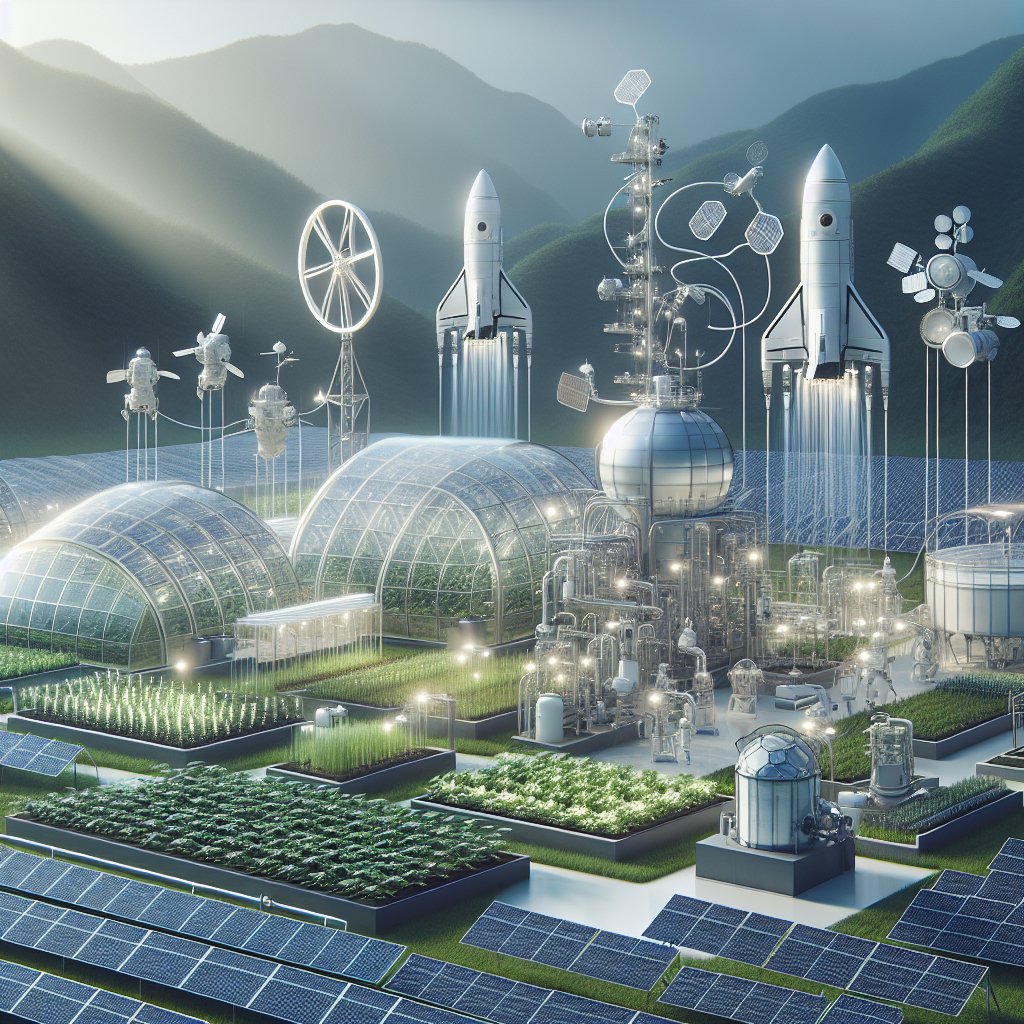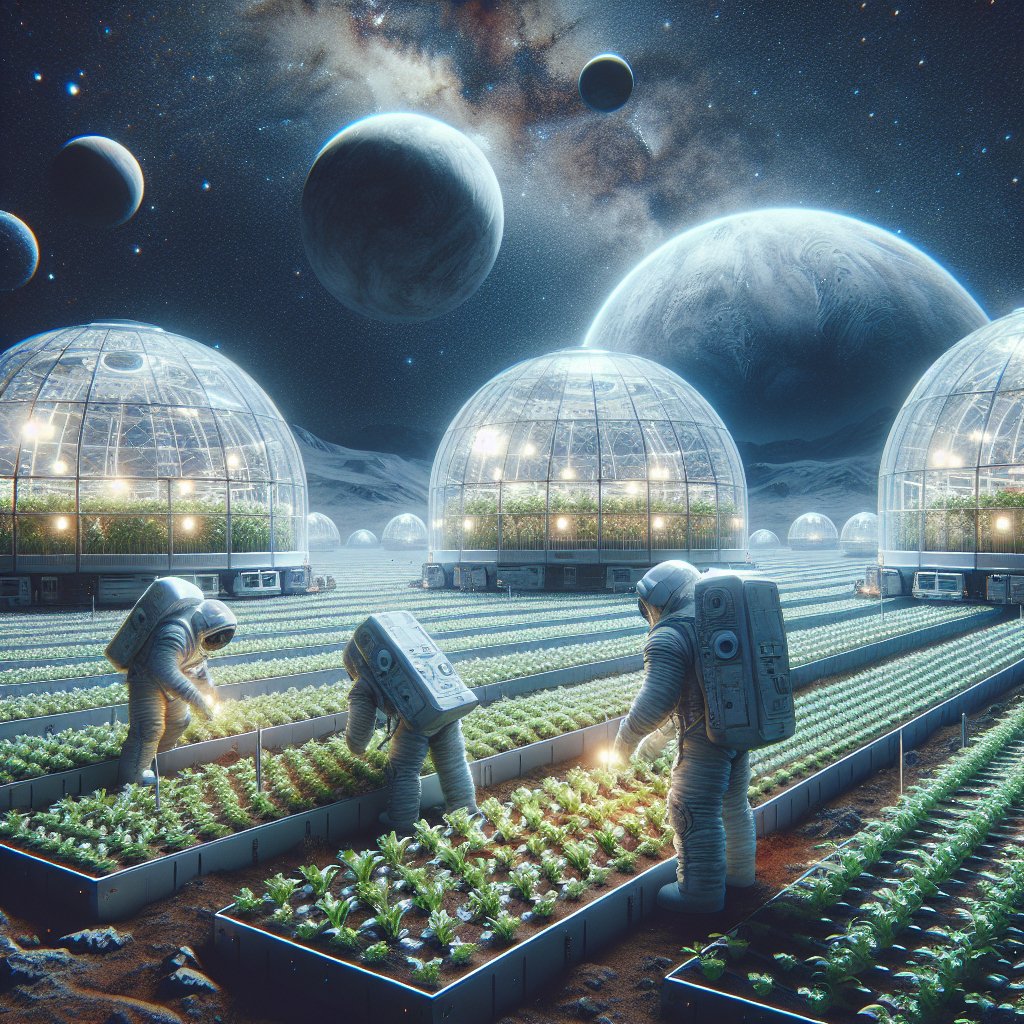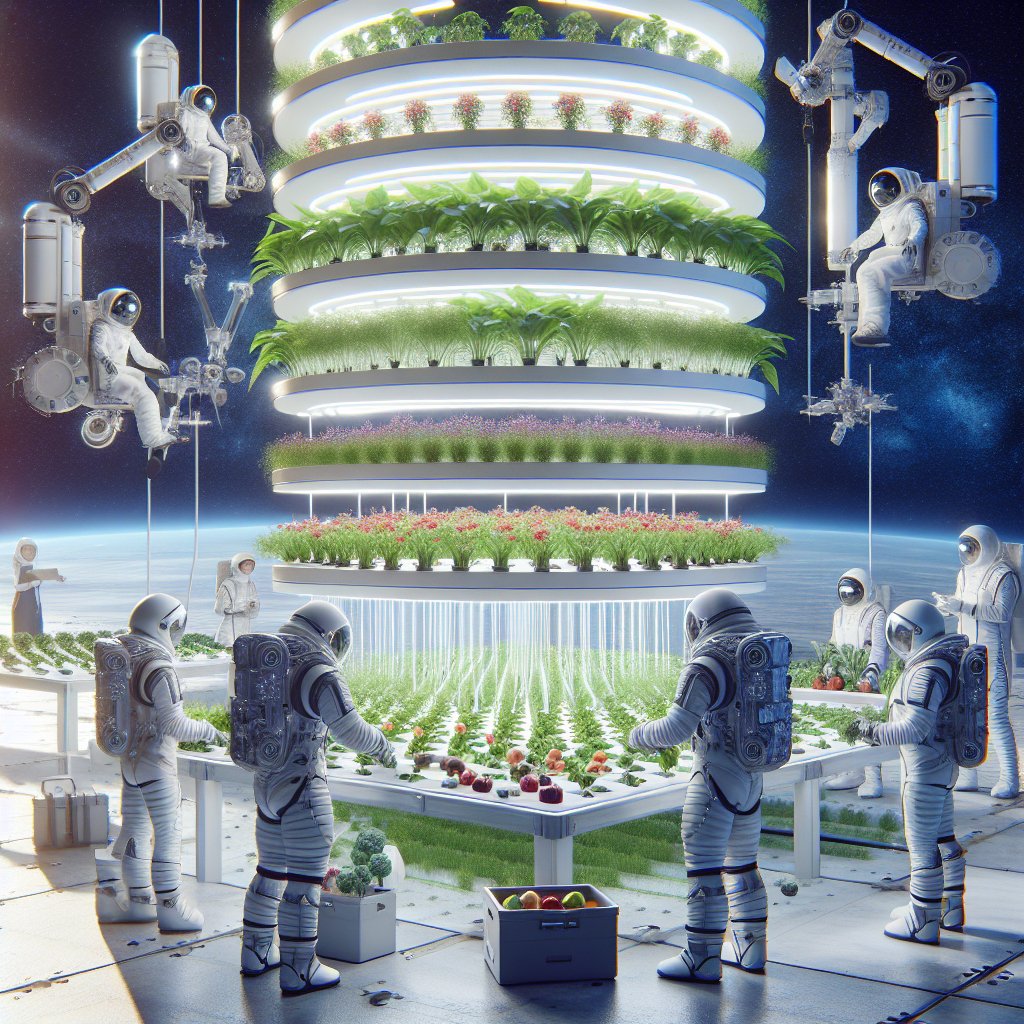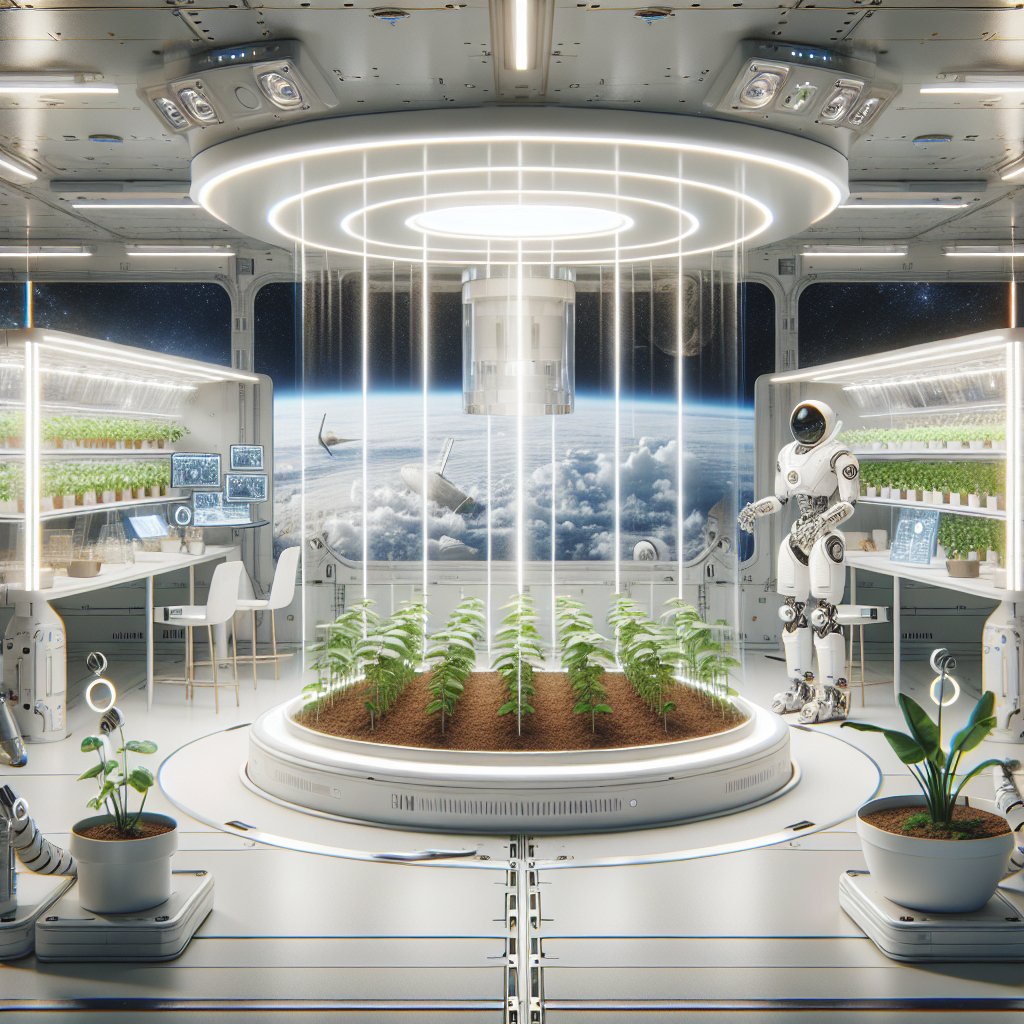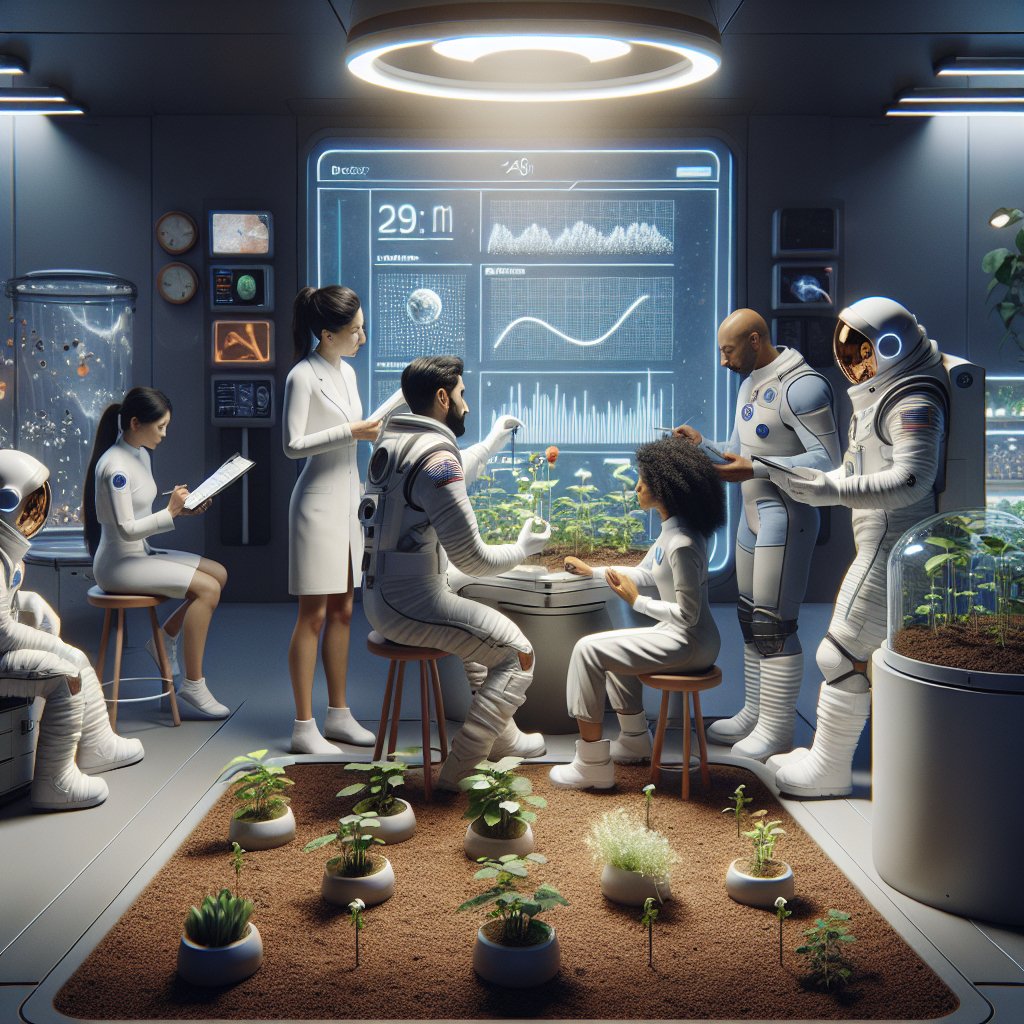The intersection of agriculture and space exploration has led to innovative energy-efficient farming technologies that are transforming the way we cultivate crops. As the world faces the dual challenges of food security and climate change, the lessons learned from space missions are proving invaluable. This article explores how advancements in space technology are being adapted for sustainable farming practices, enhancing productivity while minimizing environmental impact.
Lessons from Space: The Need for Efficiency
Space missions have always been at the forefront of technological innovation, driven by the need for efficiency in resource utilization. The harsh conditions of space require that every ounce of energy, water, and material be used judiciously. This necessity has led to the development of various technologies that can be applied to agriculture, where similar challenges exist, albeit on a different scale.
One of the most significant lessons from space exploration is the importance of closed-loop systems. In space, astronauts rely on systems that recycle air, water, and waste to sustain life. This concept is being mirrored in modern farming practices, where closed-loop systems are being developed to minimize waste and maximize resource efficiency. For instance, aquaponics combines fish farming with hydroponics, creating a self-sustaining ecosystem where fish waste provides nutrients for plants, and plants help filter and clean the water for the fish.
Water Conservation Technologies
Water scarcity is a pressing issue in agriculture, particularly in arid regions. Space missions have developed advanced water recycling technologies that can be adapted for farming. One such technology is the use of condensation systems, which capture moisture from the air. These systems can be particularly beneficial in areas where traditional irrigation methods are not feasible.
Additionally, precision agriculture, a concept heavily influenced by satellite technology, allows farmers to monitor soil moisture levels and apply water more efficiently. By using drones and satellite imagery, farmers can identify areas that require irrigation, reducing water waste and ensuring that crops receive the optimal amount of moisture.
Energy Efficiency through Solar Power
Solar energy has been a cornerstone of space missions, powering satellites and space stations. This technology is now being harnessed in agriculture to reduce reliance on fossil fuels. Solar panels can be installed on farms to provide energy for irrigation systems, greenhouses, and other farming operations. This not only lowers energy costs but also reduces the carbon footprint of agricultural practices.
Moreover, innovations such as solar-powered water pumps and automated irrigation systems are becoming increasingly popular. These technologies allow farmers to utilize renewable energy sources, ensuring that their operations are both sustainable and cost-effective.
Innovative Farming Techniques Inspired by Space Research
Beyond resource efficiency, space research has inspired a range of innovative farming techniques that enhance crop yields and resilience. These techniques often involve advanced materials and technologies developed for space missions, which are now being adapted for agricultural use.
Vertical Farming and Controlled Environment Agriculture
Vertical farming is a method that maximizes space by growing crops in stacked layers, often in controlled environments. This concept has roots in the technologies used in space habitats, where maximizing limited space is crucial. Controlled environment agriculture (CEA) utilizes advanced climate control systems to create optimal growing conditions, regardless of external weather conditions.
These systems often incorporate LED lighting, which mimics natural sunlight and can be adjusted to promote specific growth stages. By using energy-efficient lighting and climate control technologies, vertical farms can produce high yields with minimal resource input, making them a sustainable solution for urban agriculture.
Biotechnology and Genetic Engineering
Space missions have also spurred advancements in biotechnology, particularly in understanding how plants respond to stress. Research conducted in microgravity has provided insights into plant growth and development, leading to the development of genetically modified crops that are more resilient to environmental stressors such as drought, pests, and diseases.
These genetically engineered crops can thrive in less-than-ideal conditions, reducing the need for chemical inputs and increasing food security. By leveraging the knowledge gained from space research, farmers can cultivate crops that are not only more productive but also more sustainable.
The Future of Agriculture in Space
As humanity looks toward the stars, the future of agriculture may very well lie beyond our planet. Space agencies are already exploring the potential for growing food on Mars and the Moon, which will require the development of entirely new agricultural systems. The technologies and practices developed for these extraterrestrial farms will likely have applications back on Earth, further bridging the gap between agriculture and space exploration.
Space Farming Experiments
NASA and other space agencies have conducted various experiments to understand how plants grow in microgravity. These experiments have revealed that plants can adapt to different gravitational conditions, which could inform how we grow food in space. The insights gained from these experiments are being used to develop systems that could support long-duration space missions, ensuring that astronauts have a sustainable food source.
Moreover, the technologies developed for space farming, such as advanced hydroponics and aeroponics, are being tested on Earth to improve food production in urban areas and regions with limited arable land. These systems require less water and land than traditional farming methods, making them ideal for addressing food security challenges in densely populated areas.
Collaboration Between Space Agencies and Agricultural Innovators
The collaboration between space agencies and agricultural innovators is crucial for the future of sustainable farming. By sharing knowledge and resources, these entities can develop technologies that benefit both space exploration and terrestrial agriculture. Initiatives such as the International Space Station’s (ISS) Veggie experiment have demonstrated the potential for cross-disciplinary research, leading to advancements that can be applied in both fields.
As we continue to explore the cosmos, the lessons learned from space missions will undoubtedly shape the future of agriculture on Earth. By embracing the technologies and practices inspired by space exploration, we can create a more sustainable and efficient agricultural system that meets the needs of a growing global population.
Conclusion: Bridging the Gap Between Earth and Space
The integration of space technology into agriculture represents a significant step forward in our quest for sustainable food production. By learning from the challenges faced in space exploration, we can develop innovative solutions that address the pressing issues of food security and environmental sustainability on Earth. As we look to the future, the collaboration between space agencies and agricultural innovators will be essential in creating a resilient agricultural system that can thrive in an ever-changing world.
In conclusion, the synergy between agriculture and space exploration is not just a fascinating intersection of two fields; it is a necessary partnership that holds the key to a sustainable future. By harnessing the power of technology and innovation inspired by space missions, we can cultivate a greener, more efficient, and more productive agricultural landscape for generations to come.
